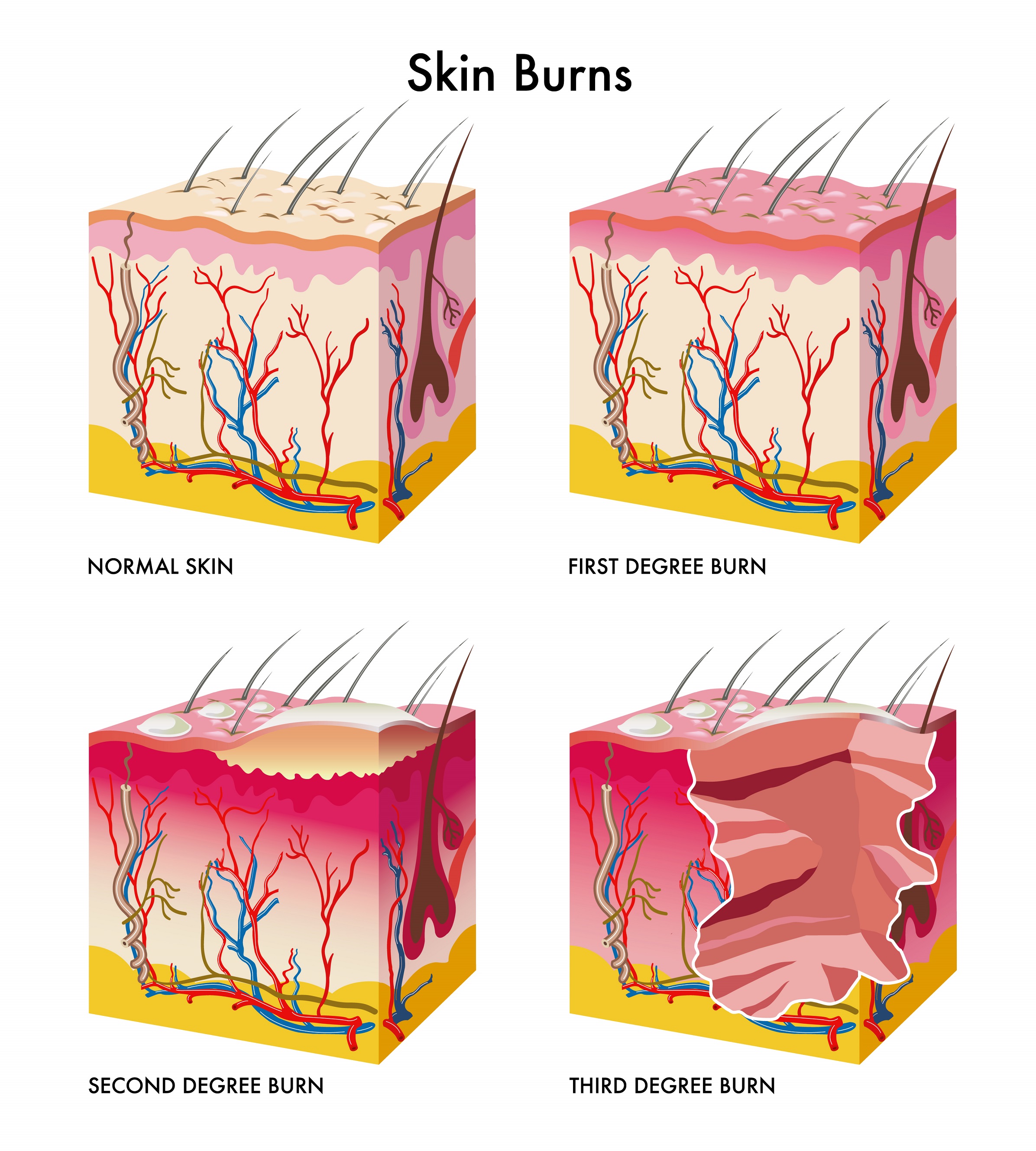
Cheek advancement and nasolabial flaps have also been used for coverage of smaller areas. Alar defects may also be reconstructed using tissue from the helical rim as a composite graft, but this is usually unavailable in patients with pan facial burns whose ears are commonly injured. 4 Unfortunately the use of scar tissue as flaps is often complicated by further retraction and nasal tip shrinkage.
#Chemical burn scar full
Some of the techniques and problems encountered are reviewed here.įor small full thickness burns defects on the nasal tip or alar region a nasal turndown flap has been described for coverage.
/BurnScars-5b5f79bc46e0fb00251463a2.jpg)
Despite this, many reconstructive surgeons persevere with using damaged and scarred tissue simply because the choices are limited. This makes it more difficult for many of the established loco-regional flap options to be used. Nasal injury caused by burns poses a particular challenge in that the adjacent facial tissues may also be damaged. 2, 3Īpart from the early pioneering work on victims of the two World Wars, there are not many publications on the modern approach to nasal reconstruction which deal with large groups of patients. 1 The concept of aesthetic subunits is also a very useful and where possible it should be applied.
#Chemical burn scar free
They have provided the foundation for the development of modern nasal reconstruction, which now includes a wide range of local, regional and free flap techniques. Historically, nasal reconstruction can be divided into three techniques: the Indian method using the forehead flap, the French method using cheek tissue and the Italian method using tissue from the arm or forearm. When injured, the restoration of a nose may pose a challenge to the reconstructive surgeon. The nose is the most central feature of the human face providing the key functions of respiration and olfaction, as well as being an important defining point for appearance and beauty. Notre expérience avec ce groupe de patients nous a conduit à développer un algorithme de traitement simple pour la prise en charge des brûlures nasales. Les améliorations cosmétiques vont du dégraissage des lambeaux au transfert de tissu. Les sténoses en rapport avec le tissu cicatriciel ou la perte de support sous jacent sont soumises aux principes de la chirurgie plastique et de la rhinoplastie. Les reconstructions nasales secondaires dépendent de l’évaluation des séquelles fonctionnelles et esthétiques. Le transfert microchirurgical libre dépend de la condition physique du patient et de la disponibilité d’une zone donneuse. Les options reconstructives dépendent de l’intégrité des tissus faciaux de voisinage qui seront toujours préférés s’ils sont disponibles. Nous avons codifié nos traitements chirurgicaux d’une manière simple et structurée. Nous présentons une analyse rétrospective de 150 patients souffrant de brûlures nasales traités dans notre centre entre Juillet 2005 et Juillet 2011. Les brûlures nasales présentent un défi pour le chirurgien plastique en terme de prise en charge immédiate, de traitement primaire ou de reconstruction avec un objectif de bon résultat esthétique et fonctionnel. Our experience with this challenging group of patients has led us to develop a simple treatment algorithm for the management of nasal burns. Cosmetic refinements range from flap debulking to the importation of new tissue on to the nose. Airways narrowing from scar contracture or loss of support are managed using standard plastic surgical and rhinoplasty principles. Secondary nasal reconstruction is based on an assessment of the residual functional and cosmetic problems.
#Chemical burn scar skin
Microsurgical free tissue transfer is dependent upon the fitness of the patient and the availability of unburned skin at the donor site.

The reconstructive options for most complex full thickness nasal injury is determined by the integrity of adjacent facial tissues which would always be preferred when available. We rationalized our conservative and all surgical treatments of this subset of burns patients and organized them in a simple and structured way. We present a retrospective analysis of the management of 150 patients with nasal burns treated in our center between July 2005 and July 2011. Nasal burns present a challenge for the plastic surgeon in terms of immediate management, choice of primary treatment and secondary reconstruction with the goals of good aesthetic and functional outcome.


 0 kommentar(er)
0 kommentar(er)
